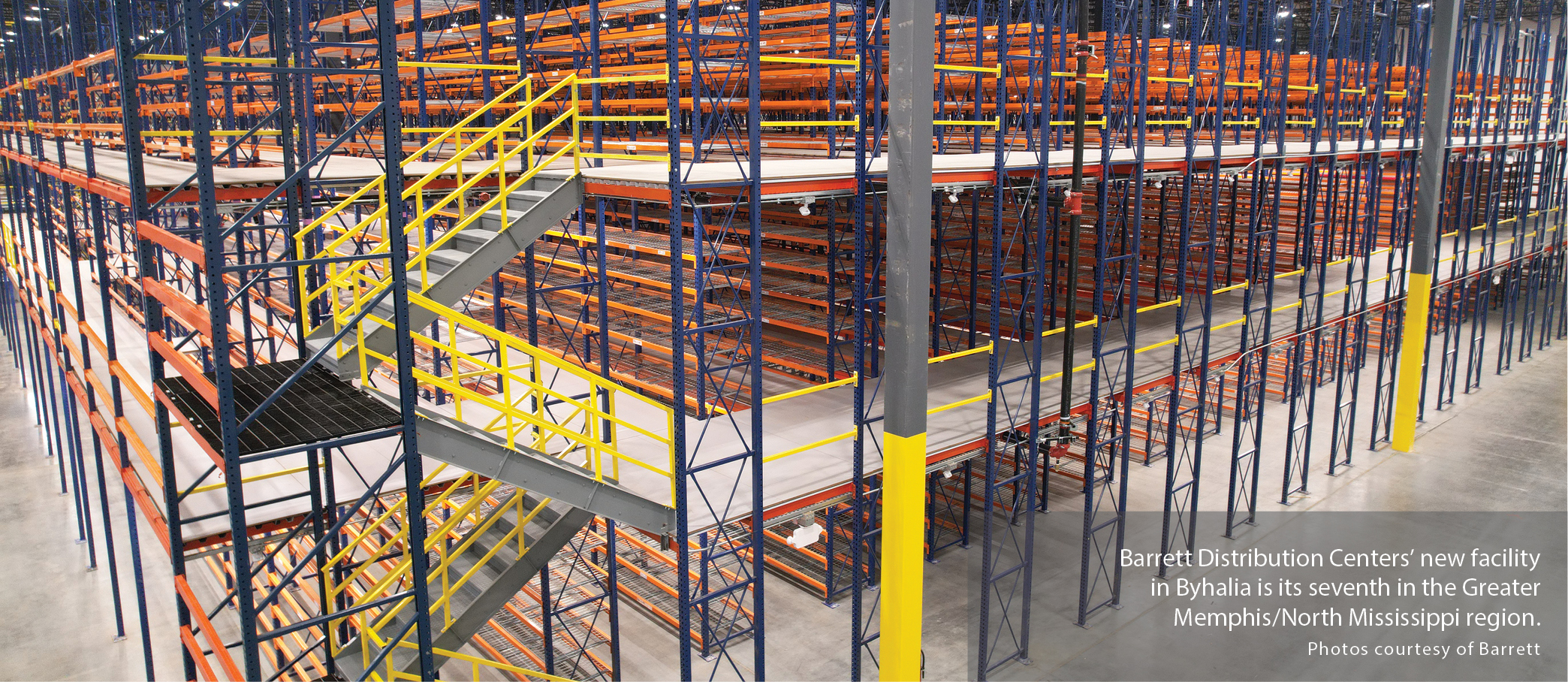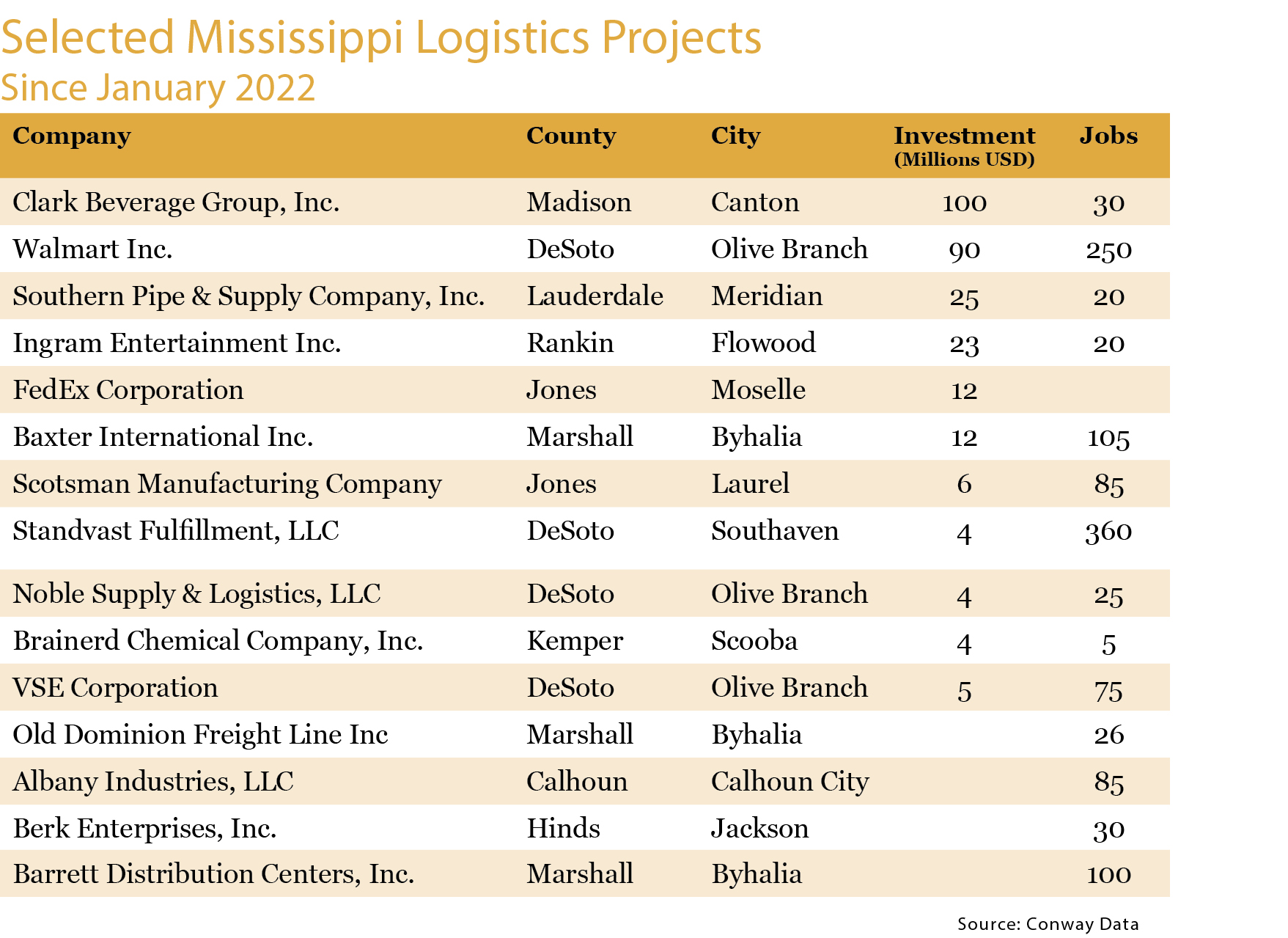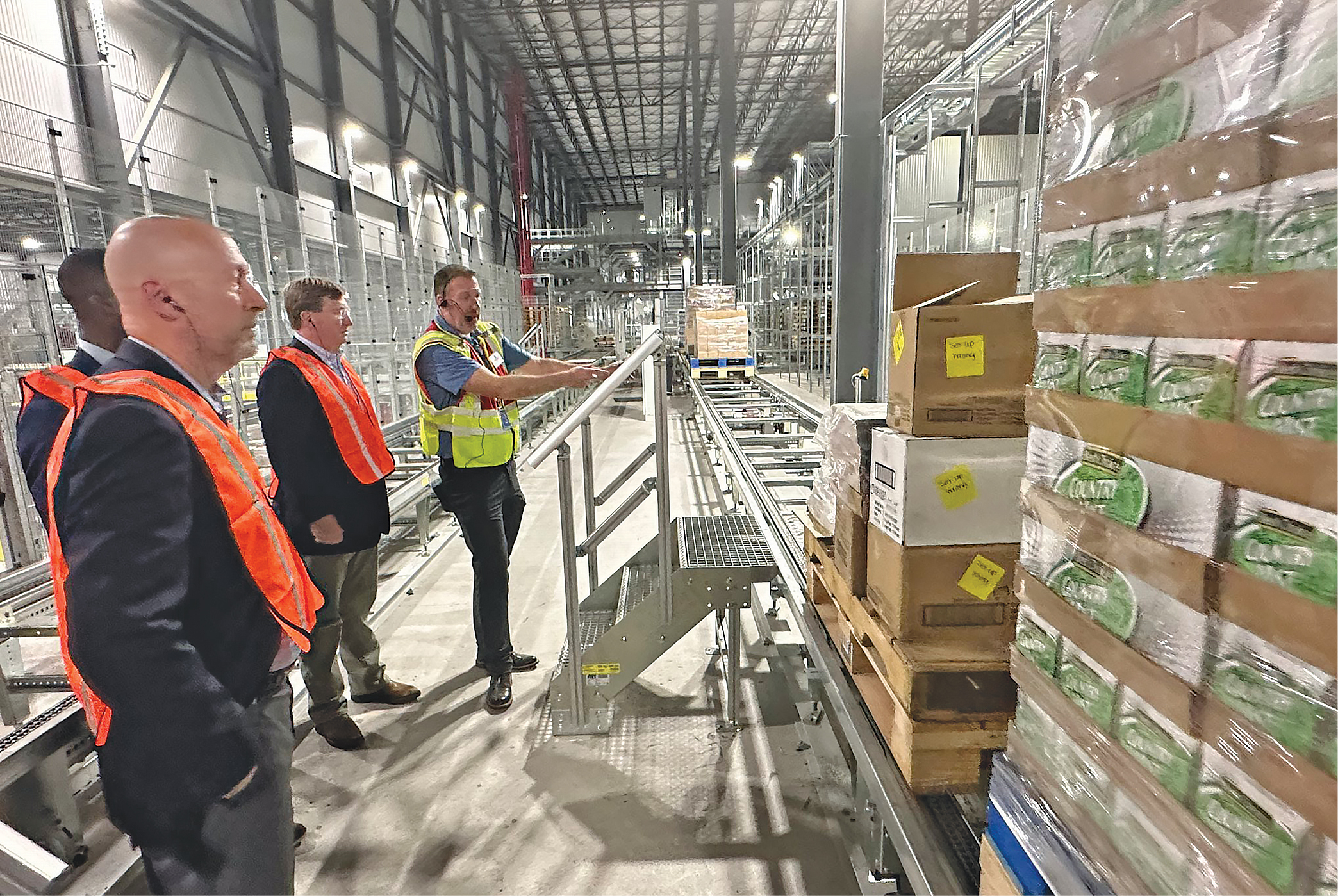O f the couple dozen Mississippi logistics facility investments documented by Site Selection since early 2022, more than a few come from companies doubling down on competitive advantages they discovered years before.
One of those is Massachusetts-based Barrett Distribution Centers, a third-party logistics (3PL) and e-commerce fulfillment solutions provider that’s operated in the Mid-South region for 15 years. The company in March announced the opening of its 24th fulfillment center, located in the Memphis-area municipality of Byhalia. Barrett said the facility, the company’s seventh in the Memphis region, is “strategically positioned to provide optimal fulfillment, warehousing and transportation solutions to both new and existing high-growth e-commerce clients,” and will initially create more than 100 new jobs with plans for continued expansion in the near future. The new facility was developed by Atlanta-based Core5 Industrial Partners.
Noting the company’s tremendous growth over the last 10 years (the company has made Inc.’s fastest growing companies list 14 times), Barrett Senior Vice President of Customer Solutions Scott Hothem said, “We continue to onboard some of the most well-known, high-growth e-commerce brands across several industries, and this new state-of-the-art warehouse will allow us to continue to meet marketplace demand for our services.”
That demand has driven the company to grow from a single 700,000-sq.-ft. location to more than 6 million sq. ft. and more than 1,000 employees in the Greater Memphis market, including space in Olive Branch, Mississippi. At 1 million sq. ft., the new Byhalia location will be the largest facility of the 24 Barrett owns and operates nationally. Hothem tells me that since planting its flag in the market 10 years ago, it’s been a matter of progressive and incremental expansion.
“When we think about site selection and our ability to hit the highest percentage of people in three to four days, Memphis ticks a lot of boxes,” Hothem says. “Byhalia is the next concentric ring with availability and new construction, not too far away from Olive Branch and Memphis operations. We have several customers already slated to move into that building before the lease was even signed.”
Open Book Is Secret Sauce
There’s a ready workforce too, he says, with deep experience in logistics, warehousing, forklift operation and technology.
“Between Olive Branch and Byhalia we’ve had really good success,” Hothem says of the workforce. “It’s a really strong labor market, and we’re happy with early recruitment of staff.”
Even in a field where automation and robotics have become table stakes, the company’s success comes in part because of an intentional focus on people.
“Our goal in any market that we operate in is to become an employer of choice,” Hothem says of his third-generation privately held employer. “We have a tremendous amount of resources with our HR team around training and profit-sharing programs at all levels of staff, from forklift drivers to facility managers.”
It stems from an open-book management structure called “the Great Game of Business” that involves sharing of financial numbers with employees. Hothem calls it the company’s secret sauce.

Scott Hothem
Senior Vice President of Customer Solutions, Barrett Distribution Centers
“We really try to push incentives for cost savings initiatives and different things like that,” he says. “They’re going to benefit from the bottom line because they will also see bonus checks on a quarterly basis based on company results. We really try to drive a sense of ownership right to the floor level of the facilities that we run, and we find that we’re able to attract a good quality workforce that just helps facilitate our growth.”
Quality incentives can help facilitate growth, too. In Mississippi, distribution and warehouse facilities are among the operations eligible for a jobs tax credit available for a five-year period equal to a percentage of payroll for each newly created job. Among other programs, they are also eligible for a 10-year property tax exemption and an income tax credit equal to the debt service on industrial revenue bonds issued by the Mississippi Business Finance Corporation (MBFC), available under the Mississippi Rural Economic Development Assistance Program. Sweeteners come at the local level, too. In December 2022, for example, DeSoto County approved a 10-year property tax exemption for a Barrett investment in Olive Branch.
‘On Day One’
In Mississippi, quality also is found in the infrastructure, as community leaders have recognized the need to keep up with the pounding the highways take from being part of one of the nation’s top logistics hubs. Today that hub finds itself close to another emerging hub: the world of electric vehicle and battery manufacturing. Hothem points out that Ford and SK’s massive BlueOval City complex is rising just 60 miles away.

“We expect that as that takes hold, it’s going to fill in with a lot of commercial real estate,” he says, as a supply chain ecosystem builds up to serve the needs of that complex much like what’s unfolded around the BMW complex in upstate South Carolina over the past 30 years. “We certainly expect to see a lot more development in that general area,” Hothem says. That could include more development from Barrett, as the company now averages one to two new facilities a year with no signs of slowing that pace. As customers and population drive demand, “there’s really not an area we won’t consider,” Hothem says.
Some areas could get more consideration than others.
“Mississippi has been very aggressive at pursuing business and new employers,” Hothem says. “As we’ve grown and get more scale, more people are coming to us saying, ‘You might consider this area of Olive Branch,’ for example. Working with the local town and city offices, they’ve been really welcoming. I can only see us getting larger in the Mississippi and Memphis markets. The more experience we have hiring from that part of the state, the more confident we are we can get a workforce on day one.”


